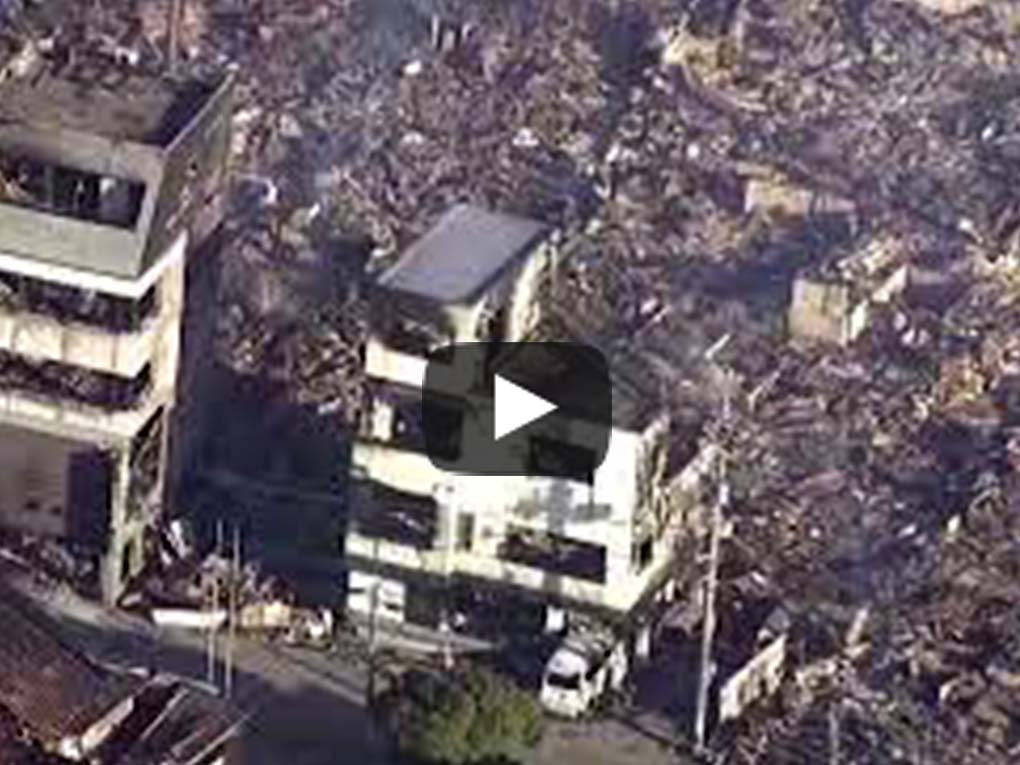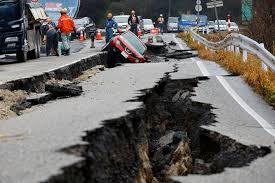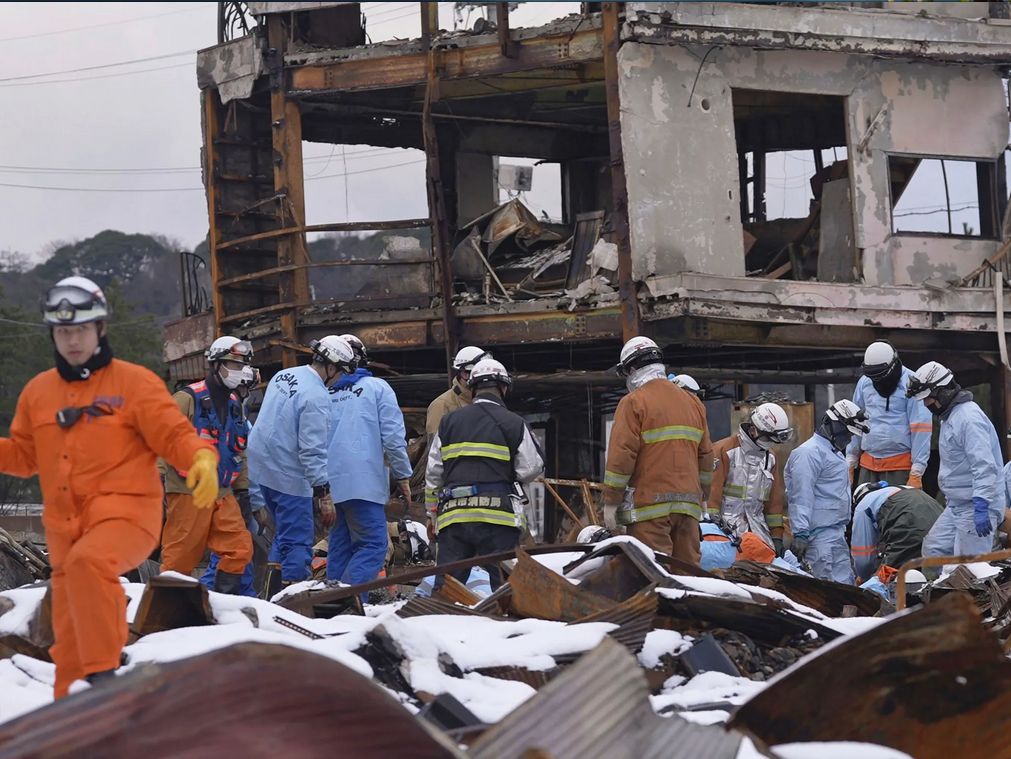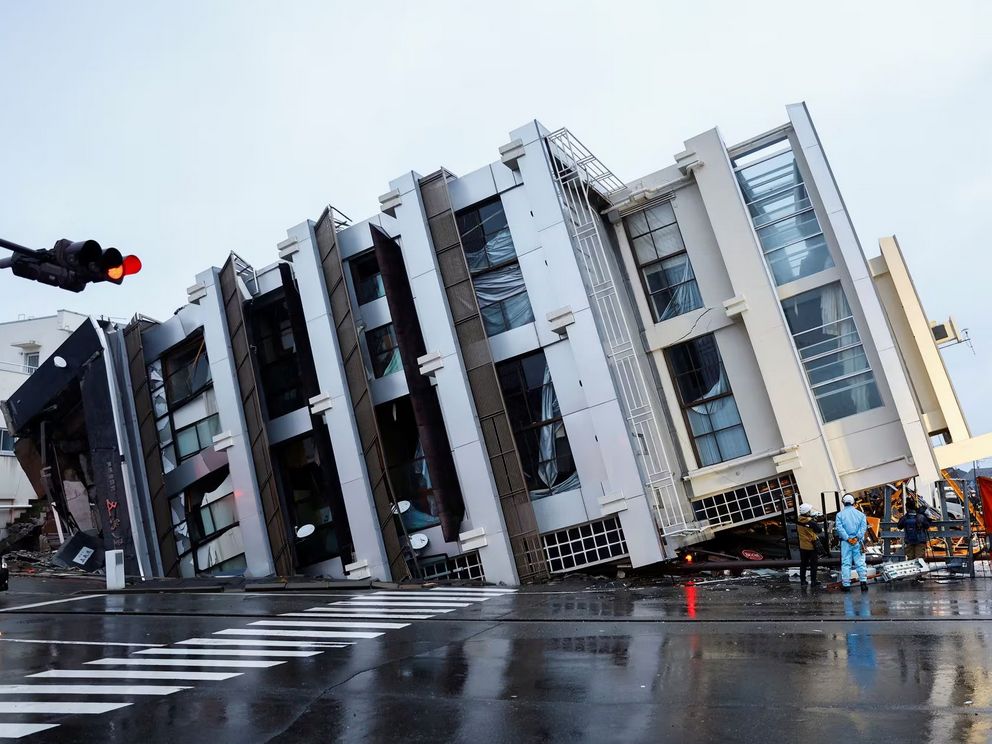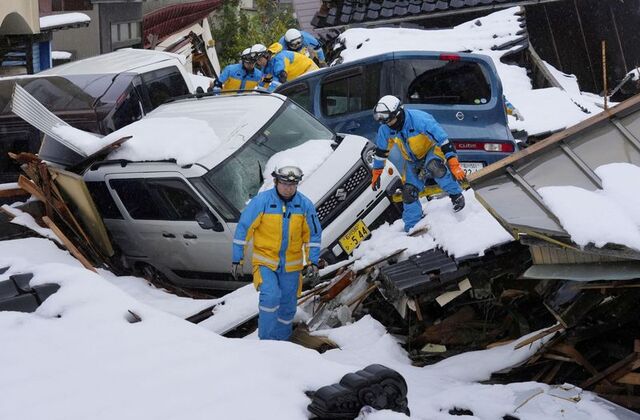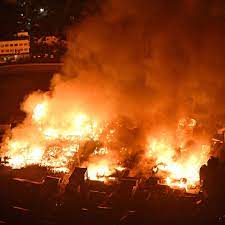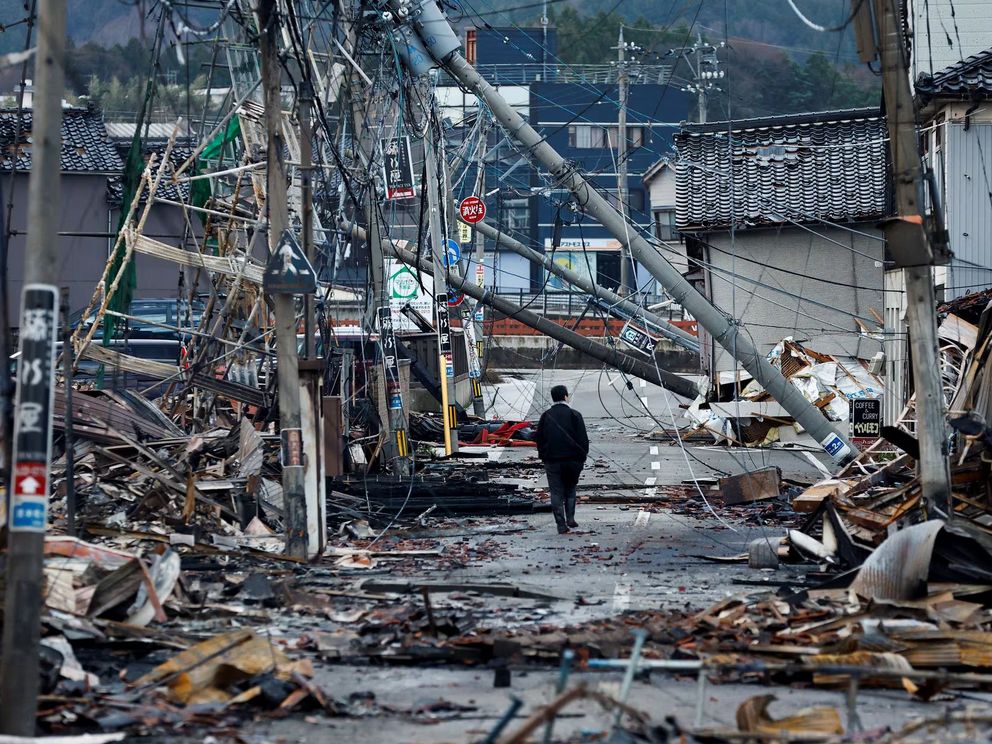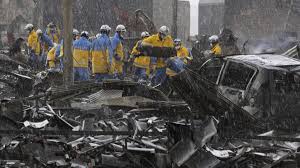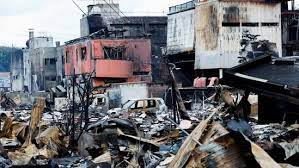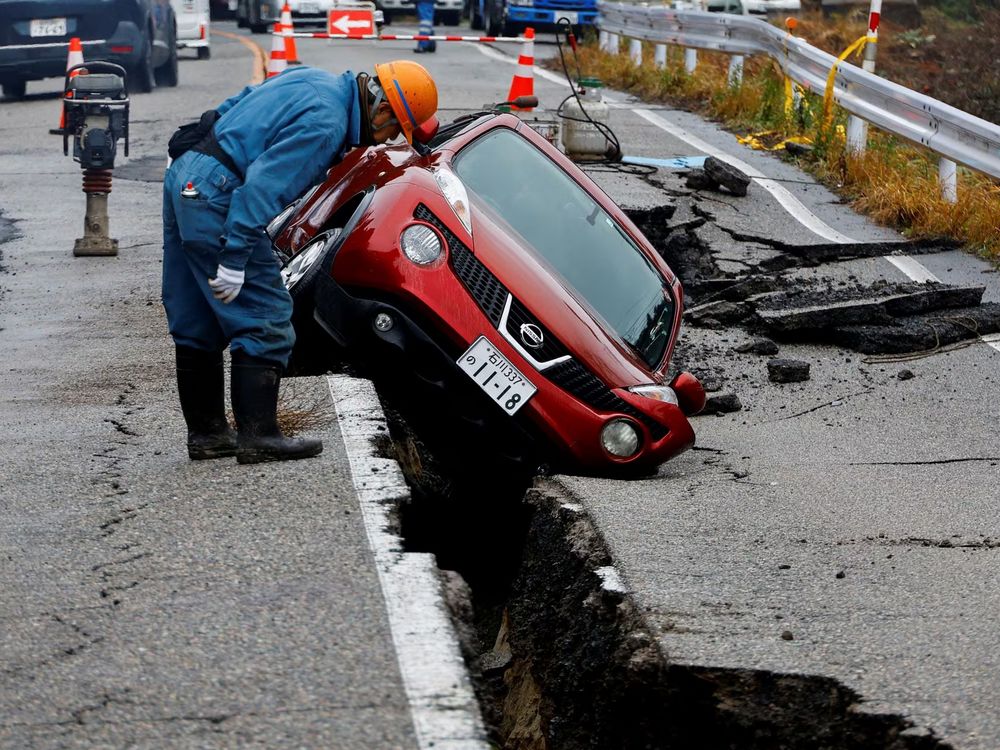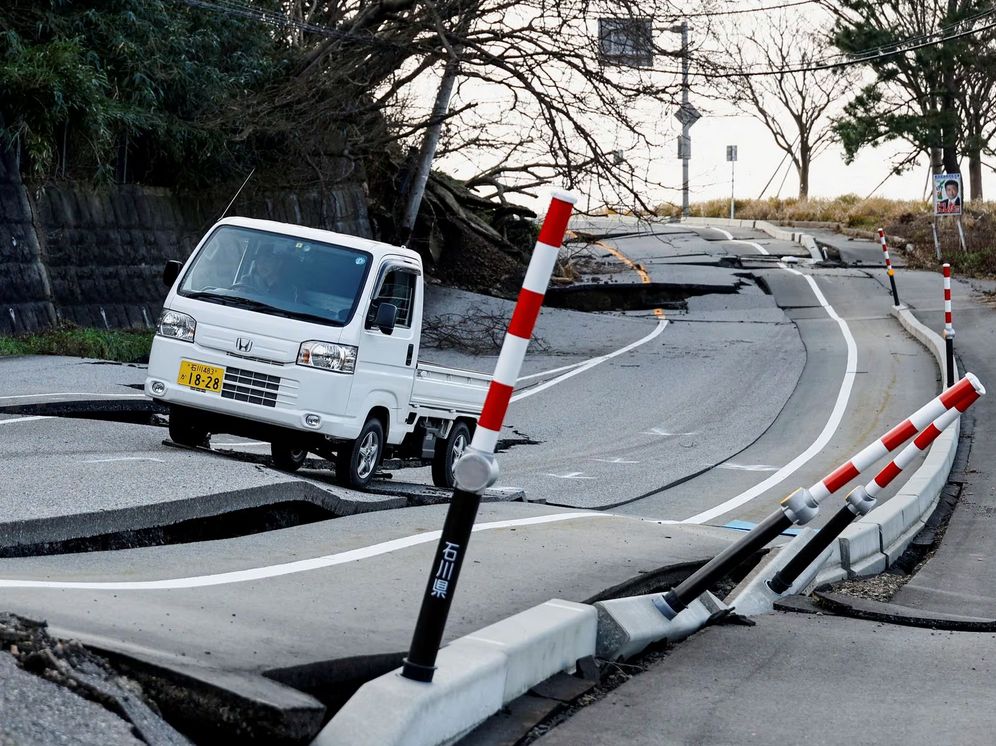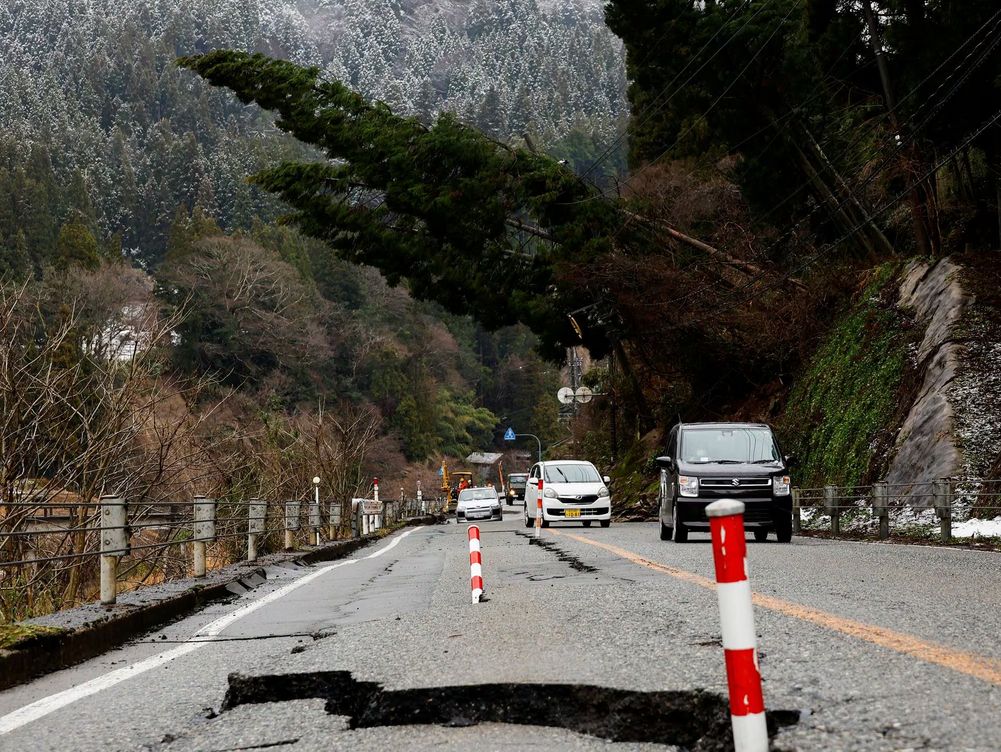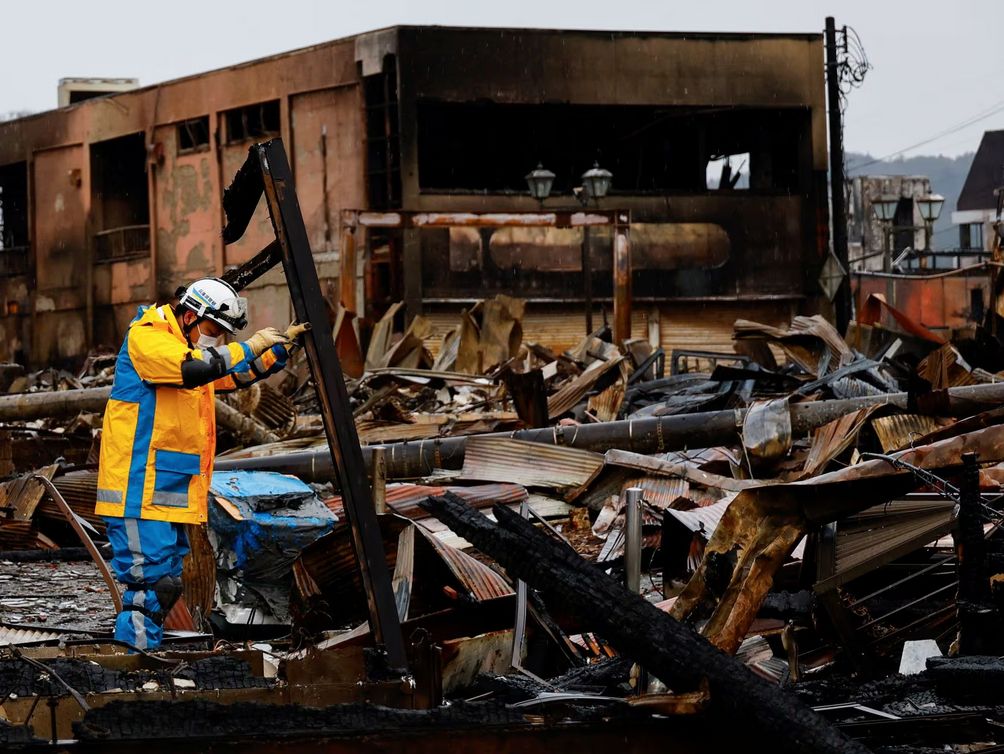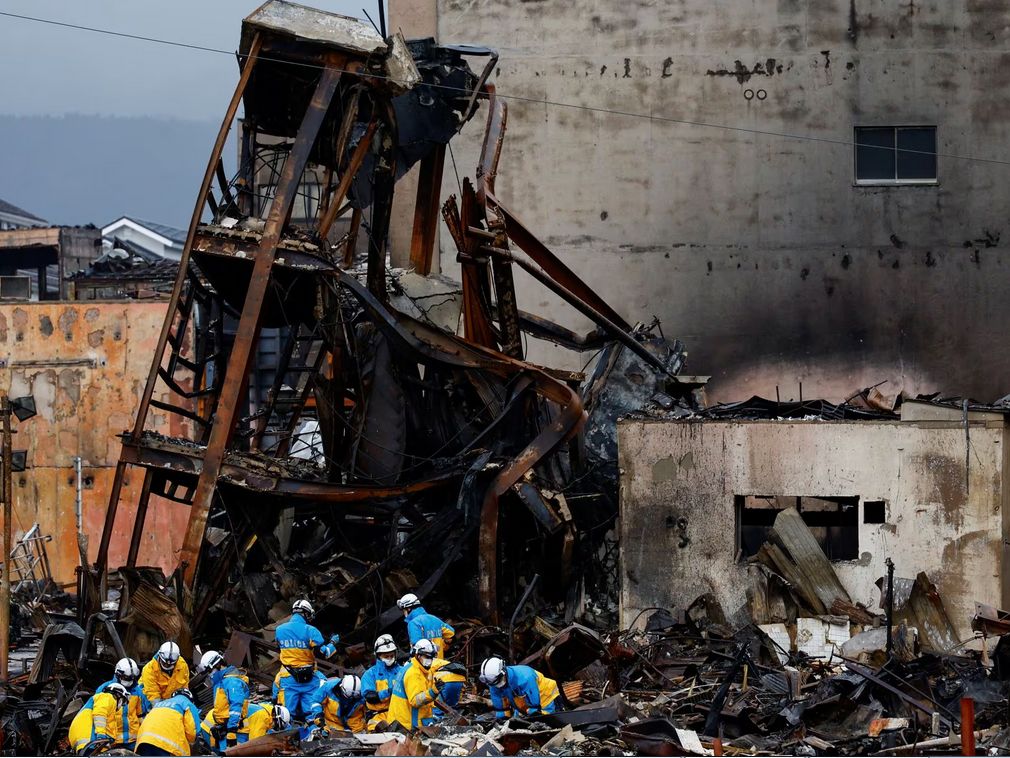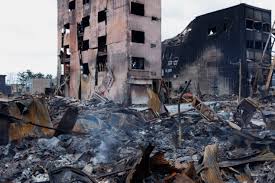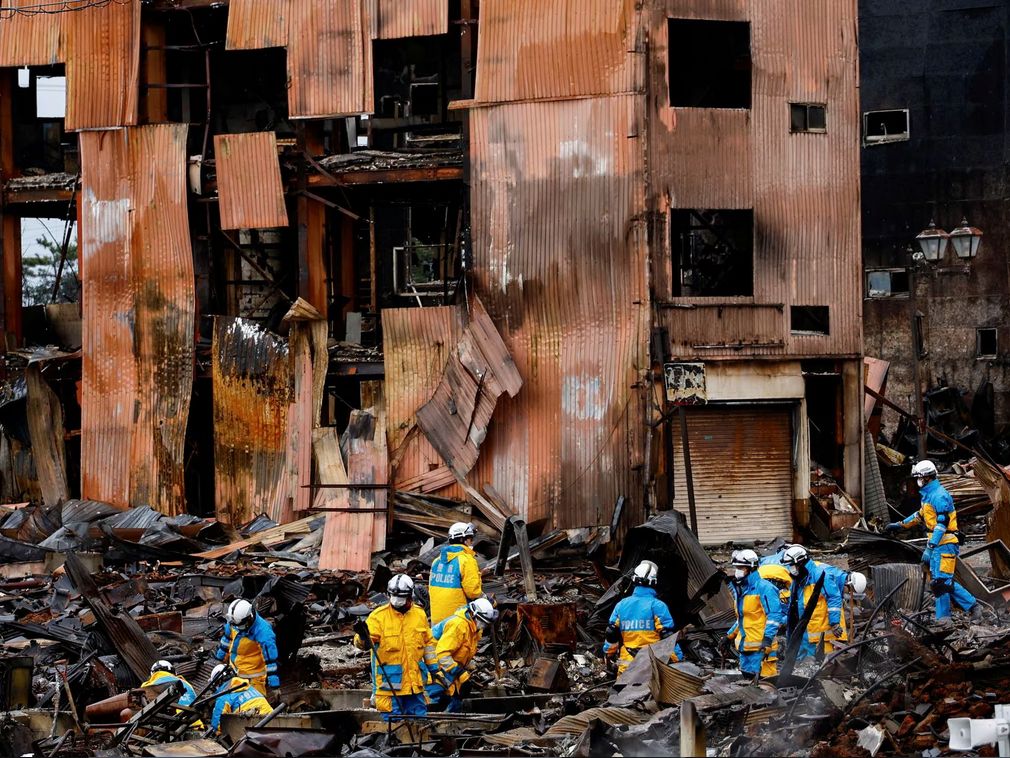- Home
- Magazines
-
Newsletters
- 19 July 2024
- 12 July 2024
- 5 July 2024
- 28 June 2024
- 14 June 2024
- 7 June 2024
- 31 May 2024
- 24 May 2024
- 17 May 2024
- 10 May 2024
- 3 May 2024
- 26 April 2024
- 19 April 2024
- 12 April 2024
- 22 March 2024
- 15 March 2024
- 8 March 2024
- 1 March 2024
- 23 February 2024
- 16 February 2024
- 9 February 2024
- 26 January 2024
- 19 January 2024
- 12 January 2024
- 22 December 2023
- 1 December 2023
- 24 November 2023
- 10 November 2023
- 3 November 2023
- 27 October 2023
- 20 October 2023
- 13 October 2023
- 6 October 2023
- 29 September 2023
- 22 September 2023
- 15 September 2023
- 8 September 2023
- 25 August 2023
- 18 August 2023
- 11 August 2023
- 4 August 2023
- 28 July 2023
- 21 July 2023
- 14 July 2023
- 7 July 2023
- 30 June 2023
- 23 June 2023
- 15 June 2023
- 2 June 2023
- 26 May 2023
- 19 May 2023
- 12 May 2023
- 5 May 2023
- 28 April 2023
- 21 April 2023
- 14 April 2023
- 6 April 2023
- 31 March 2023
- 24 March 2023
- 17 March 2023
- 10 March 2023
- 3 March 2023
- 24 February 2023
- 17 February 2023
- 10 February 2023
- 3 February 2023
- 27 January 2023
- 13 January 2023
- 22 December 2022
- 15 December 2022
- 9 December 2022
- 2 December 2022
- 25 November 2022
- 18 November 2022
- 11 November 2022
- 4 November 2022
- Advertising
- Subscribe
- Articles
-
Galleries
- AOSH Firexpo 2024
- Midvaal Fit to Fight Fire 2024
- WoF KNP 2023 Gallery
- TFA 2023 Gallery
- DMISA Conference 2023
- ETS 2023 Gallery
- Drager Fire Combat and Rescue Challenge 2023
- AOSH Firexpo 2023
- Midvaal Fit to Fight Fire
- WC IFFD 2023
- NMU 13th Fire Management Symposium 2022
- JOIFF Africa Conference 2022
- ETS 2022 Gallery
- TFA 2022 Gallery
- IFFD 2018
- SAESI
- TFA
- WRC 2018
- WRC 2019
- A-OSH/Securex
- IFE AGM 2019
- ETS Ind Fire Comp Nov 2019
- ETS Challenge 2021
- Drager launch
- Drager Fire Combat and Rescue Challenge 2022
- TFA
- Contact
- Home
- Magazines
-
Newsletters
- 19 July 2024
- 12 July 2024
- 5 July 2024
- 28 June 2024
- 14 June 2024
- 7 June 2024
- 31 May 2024
- 24 May 2024
- 17 May 2024
- 10 May 2024
- 3 May 2024
- 26 April 2024
- 19 April 2024
- 12 April 2024
- 22 March 2024
- 15 March 2024
- 8 March 2024
- 1 March 2024
- 23 February 2024
- 16 February 2024
- 9 February 2024
- 26 January 2024
- 19 January 2024
- 12 January 2024
- 22 December 2023
- 1 December 2023
- 24 November 2023
- 10 November 2023
- 3 November 2023
- 27 October 2023
- 20 October 2023
- 13 October 2023
- 6 October 2023
- 29 September 2023
- 22 September 2023
- 15 September 2023
- 8 September 2023
- 25 August 2023
- 18 August 2023
- 11 August 2023
- 4 August 2023
- 28 July 2023
- 21 July 2023
- 14 July 2023
- 7 July 2023
- 30 June 2023
- 23 June 2023
- 15 June 2023
- 2 June 2023
- 26 May 2023
- 19 May 2023
- 12 May 2023
- 5 May 2023
- 28 April 2023
- 21 April 2023
- 14 April 2023
- 6 April 2023
- 31 March 2023
- 24 March 2023
- 17 March 2023
- 10 March 2023
- 3 March 2023
- 24 February 2023
- 17 February 2023
- 10 February 2023
- 3 February 2023
- 27 January 2023
- 13 January 2023
- 22 December 2022
- 15 December 2022
- 9 December 2022
- 2 December 2022
- 25 November 2022
- 18 November 2022
- 11 November 2022
- 4 November 2022
- Advertising
- Subscribe
- Articles
-
Galleries
- AOSH Firexpo 2024
- Midvaal Fit to Fight Fire 2024
- WoF KNP 2023 Gallery
- TFA 2023 Gallery
- DMISA Conference 2023
- ETS 2023 Gallery
- Drager Fire Combat and Rescue Challenge 2023
- AOSH Firexpo 2023
- Midvaal Fit to Fight Fire
- WC IFFD 2023
- NMU 13th Fire Management Symposium 2022
- JOIFF Africa Conference 2022
- ETS 2022 Gallery
- TFA 2022 Gallery
- IFFD 2018
- SAESI
- TFA
- WRC 2018
- WRC 2019
- A-OSH/Securex
- IFE AGM 2019
- ETS Ind Fire Comp Nov 2019
- ETS Challenge 2021
- Drager launch
- Drager Fire Combat and Rescue Challenge 2022
- TFA
- Contact
|
19 January 2024
|
Powerful quake rocks Japan followed by tsunami and widespread landslides, killing at least 232; seriously injuring 1 100; 21 people remain missing
On 1 January 2024, at 16h10 JST, a MJMA7.6 (Mw7.5) earthquake struck 7km north-northwest of Suzu, located on the Noto Peninsula of Ishikawa Prefecture in Japan. The reverse-faulting shock achieved a maximum JMA seismic intensity of Shindo 7 and Modified Mercalli intensity of IX (Violent). The shaking and accompanying tsunami caused extensive damage on the Noto Peninsula, particularly in the towns of Wajima, Suzu and Anamizu. Ishikawa reported 232 fatalities and 21 missing, while over 1 100 were injured across multiple prefectures, making it the deadliest earthquake in Japan since the 2016 Kumamoto earthquakes.
The Japan Meteorological Agency (JMA) officially named this earthquake the 2024 Noto Peninsula Earthquake. It led to Japan's first major tsunami warning since the 2011 Tōhoku earthquake and a tsunami of 6,58m was measured along the Sea of Japan coast.
The earthquake struck as Japan was marking New Year's Day, a public holiday when many were at home and most establishments were closed. At least 232 deaths occurred in Ishikawa Prefecture; 99 in Suzu, 98 in Wajima, 20 in Anamizu, seven in Noto, five in Nanao, two in Shika and one in Hakui. 14 people died in the aftermath due to injuries or illnesses. Additionally, one person was killed by the tsunami. At least 1 045 people were seriously injured in the prefecture and as of 17 January 2024, 21 people remained missing.
Damage was especially severe in Wajima and Suzu although their extent was unclear. At least 780 people across 30 districts in remote villages were isolated due to damaged roads and landslides and required helicopters to be reached. Many of the collapsed houses in Wajima were traditional wooden structures that were built prior to current building regulations that were imposed in 1981. Information from 2018 also revealed that more than half of buildings in Wajima did not follow these regulations. In Suzu, many buildings were built before the enactment of modern building codes in 1950, while in 2019, only 51 percent of the town's houses were deemed earthquake-resistant, compared with 87 percent for the entire country.
At least 22 495 buildings across Ishikawa were damaged or destroyed. Many homes in Wajima and Suzu were destroyed but the number remains unspecified. In Wajima, at least 60 houses collapsed and ninety percent of the fatalities there were attributed to falling debris from collapsed houses. A fire occurred in the city at around 17h00. Due to damaged roads, firefighters were unable to extinguish the flames. The fire consumed an estimated 200 buildings, including many homes and the Asaichi morning market, a 1 000-year-old shopping district and tourist attraction that hosted about 200 stalls. An area of up to 48 000 m2 was affected by the fire, which experts said was exacerbated by the loss of water supply and the tsunami warning, which prevented firefighters from responding immediately to the fire. At least 481 people were injured in the city. In Suzu, up to 5 000 houses and 90 percent of the buildings were destroyed, including many due to fires.The mayor of Suzu said about 4 000 to 5 000 households of the city's 6 000 were no longer habitable, adding that damage was "catastrophic".
The Ishikawa Nanao Police Station said collapsed homes trapped people before they were rescued. A spokesperson at Wajima Municipal Hospital said people had broken bones or were injured by falling objects. At least 2 855 houses in Shika were damaged including 41 which collapsed or sustained severe damage. In Anamizu, over 1 000 buildings were damaged or destroyed, including three by a landslide which killed 16 people. Across the mountainous region of the peninsula, landslides were widespread. The number of landslides was estimated at 1 000. At least nine landslide dams were discovered in the Wajima area on 9 January 2024. These landslide dams had the potential to cause debris avalanches.
In Noto, 352 houses collapsed, including five which were destroyed by fire. The tsunami also washed debris onto streets. Operations of the Noto Airport were suspended after five cracks as long as 10m appeared on the runway; the terminal of the airport also sustained damage. Access roads leading to the airport were blocked, while about 500 passengers were left stranded inside the facility, which was expected to be closed until 4 January 2024. Access to the northern part of the Noto Peninsula was limited by a damaged road. In Nanao, 7 276 houses were damaged or destroyed and Noto Island was isolated after the bridge linking it to the town was closed. At least 1 141 houses in Uchinada and 820 others in Kahoku were damaged. In Kanazawa, 2 600 buildings were damaged, including four that collapsed, while 1 467 others in Nakanoto were affected. In Nomi, one building partially collapsed and 230 others were damaged, while 1 393 houses in Hakui were damaged, including 25 that collapsed. In Hōdatsushimizu, 558 buildings were affected. At least 104 buildings were damaged in Hakusan while five others collapsed and 833 others were damaged in Kaga, while in Komatsu, 758 houses were damaged, five of which partially collapsed.
In Niigata Prefecture, 49 people were injured, 502 buildings collapsed or were badly affected and 8 328 others were partially damaged, including 7 303 in Niigata City and 1 025 others outside the city; 44 areas of Nishi Ward had liquefaction reported. One cardiac arrest case was reported in an elderly person in the prefecture, likely linked to the earthquake. In Toyama Prefecture, 44 people were injured, three of them seriously. Eight of the injuries occurred after the ceiling of a pachinko parlour collapsed in Toyama City. 77 buildings collapsed or were severely damaged and 3 510 others were partially damaged, mostly in the cities of Imizu and Himi. In Fukui Prefecture, six people sustained minor injuries and 45 houses sustained minor damage in Awara. Two injuries were also reported each in Osaka and Hyōgo Prefectures,while one person each was injured in Gifu and Nagano prefectures; in Nagano, four houses were partially damaged.
Cracked roads and broken water mains were reported in the cities of Himi and Oyabe, Toyama Prefecture. Liquefaction occurred in Niigata city; sewer pipes also ruptured and many homes were left without water. Thirty homes, mostly in Nishi-ku, were damaged. The Onohiyoshi Shrine in Kanazawa also sustained damage. A landslide struck the main expressway between Toyama and Kanazawa, ripping apart several hundred meters of roadway. Four houses along a hill fell over as the land under them collapsed in the eastern part of Kanazawa. Sections of Japan National Route 8 were buried by landslides in Jōetsu, while track foundations caved in at the JR Echigo Line. A bridge along the Kurobe Gorge Railway, a popular tourist line, was damaged due to falling rocks. Cracks also appeared at the Nōetsu Expressway.
Around 260 convenience stores in the affected areas belonging to 7-11 and Family Mart were closed, while deliveries were delayed due to road closures. Japan Post also suspended services to the Noto Peninsula until 12 January 2024 due to road closures. NTT Docomo, Rakuten Mobile, Softbank and KDDI reported telecommunications and internet service disruptions in Ishikawa and Niigata prefectures, while NTT West said its facilities were damaged by the earthquake. At Shika Nuclear Power Plant, an explosion occurred near the power transformer of the No 2 reactor, while the transformer at the No 1 reactor was rendered inoperable due to an oil spill. The site's 4m high seawall was found to have tilted by around several centimetres following the earthquake. At the Kashiwazaki-Kariwa Nuclear Power Plant in Niigata prefecture, water spilled from the fuel pools of two reactors due to the force of the earthquake.
At least 36 000 households and 19 medical facilities lost power following the earthquake and more than 110 000 households were left without water. In Shika, water was being rationed daily at six litres per person following the earthquake. By the morning of 3 January 2024, the number of households without power had dropped to approximately 33 900.
The Ministry of Education, Culture, Sports, Science and Technology reported that 276 educational facilities had been damaged by the earthquake, particularly in Niigata, Ishikawa, Toyama, Fukui and Shiga prefectures. It also said 39 schools in four prefectures had been converted to evacuation shelters. The ministry also reported damage to 20 cultural sites in Toyama and Niigata prefectures. Several stone lanterns collapsed at the Zuiryū-ji temple in Takaoka, which is a designated National Treasure, while a slope collapsed at the Sado mine. About 350 people across evacuation centres were infected by COVID-19 or the common flu, while at least 40 cases of gastrointestinal illnesses such as norovirus were detected. In Suzu, a 90-year-old woman was rescued from a collapsed house after 124 hours.
Government response
Prime Minister Fumio Kishida announced the establishment of a special emergency centre to gather and disseminate information on the earthquake and tsunami. Defence minister Minoru Kihara ordered the Japan Self-Defence Forces (JSDF) to assist in rescue efforts. He later announced the deployment of 2 000 JSDF personnel to the affected region, with 8 500 others on standby. About 20 JSDF aircraft were also dispatched to survey the damage. An additional 2 000 firefighters and 1 000 police officers were also deployed to assist in rescue operations. About 3 000 rescuers were sent to the Noto Peninsula alone. By 4 January 2024, at least 150 people had been rescued, while at least 2 000 of the 10 000 evacuees from Wajima had received humanitarian aid.
The Japanese government announced that it would allocate 4 billion yen ($28 million) from reserve funds to use in disaster relief efforts and increased the number of JSDF personnel involved in the response to 6 300. Defence Minister Kihara added that UH60JA helicopters were to be used in relief efforts, in their first major deployment since the 2023 Miyakojima helicopter crash in April. The Japanese government also announced that families whose houses were completely destroyed or severely damaged would receive aid amounting to 3 million yen ($20,000). Kishida later said that the government would allocate a total of 100 billion yen ($690 million) in reconstruction efforts and increase its reserve funds to $6,9 billion dollars in the upcoming annual budget to ensure support for recovery efforts.
Ishikawa, Niigata, Toyama and Fukui prefectures requested financial support for 47 municipalities under the Disaster Relief Act, under which the national government is expected to cover 50 to 90 percent of expenses for disaster response and rehabilitation. The Japanese health ministry also instructed hospitals to offer health insurance coverage to patients affected by the quake, including those without insurance certificates and opened a telephone interpreting service in 23 languages to help medical workers handle foreign patients in the affected areas. Authorities in Ishikawa prefecture also opened an email help line to assist affected residents and tourists.
On 4 January 2024, the Japan Coast Guard began searching its coast with an aircraft and patrol boat for people missing; presumably swept away by the tsunami. At least one person was declared missing from the tsunami. At least two people were rescued after the expiration of the 72-hour survival window in Wajima on 4 January 2024. Large holes in roads and landslides made rescue efforts challenging four days after the earthquake. Snowy weather conditions also affected rescue efforts, with snowfall reaching 10cm in several areas and raising concerns of additional building collapses. Snowfall significantly affected rescuers' ability to deliver supplies to isolated villages and recover survivors. Power was also cut due to snow, disabling cell phones.
By 3 January 2024, about 31 800 people were living in shelters following the earthquake, with about 27 700 sheltering in 336 evacuation centres in Ishikawa prefecture alone. Following reports of deaths at evacuation centres, several vulnerable evacuees were evacuated to other prefectures, with at least 30 people being transferred to medical facilities in Aichi Prefecture. The government said it had secured about 6 500 public housing units for evacuees to resettle across the country. The construction of temporary housing began on 12 January 2024 with 115 home units in Wajima and Suzu. 60 units in Noto and Anamizu were also scheduled for construction on 15 January 2024. Local authorities announced plans to transfer students from schools in Wajima that had been converted to evacuation centres to schools in Hakusan and Kanazawa.
On the evening of 2 January 2024, a collision occurred at Haneda Airport in Tokyo between a Japan Coast Guard DHC-8 aircraft carrying humanitarian aid to earthquake victims in Niigata and Japan Airlines Flight 516, an A350-900 from New Chitose Airport landing at Haneda, destroying both aircraft. All 379 people aboard the JAL plane were evacuated; however, 15 sustained injuries. The captain of the Coast Guard plane escaped with critical injuries, while the remaining five crew members were killed.
Sources: Reuters, CNN
The Japan Meteorological Agency (JMA) officially named this earthquake the 2024 Noto Peninsula Earthquake. It led to Japan's first major tsunami warning since the 2011 Tōhoku earthquake and a tsunami of 6,58m was measured along the Sea of Japan coast.
The earthquake struck as Japan was marking New Year's Day, a public holiday when many were at home and most establishments were closed. At least 232 deaths occurred in Ishikawa Prefecture; 99 in Suzu, 98 in Wajima, 20 in Anamizu, seven in Noto, five in Nanao, two in Shika and one in Hakui. 14 people died in the aftermath due to injuries or illnesses. Additionally, one person was killed by the tsunami. At least 1 045 people were seriously injured in the prefecture and as of 17 January 2024, 21 people remained missing.
Damage was especially severe in Wajima and Suzu although their extent was unclear. At least 780 people across 30 districts in remote villages were isolated due to damaged roads and landslides and required helicopters to be reached. Many of the collapsed houses in Wajima were traditional wooden structures that were built prior to current building regulations that were imposed in 1981. Information from 2018 also revealed that more than half of buildings in Wajima did not follow these regulations. In Suzu, many buildings were built before the enactment of modern building codes in 1950, while in 2019, only 51 percent of the town's houses were deemed earthquake-resistant, compared with 87 percent for the entire country.
At least 22 495 buildings across Ishikawa were damaged or destroyed. Many homes in Wajima and Suzu were destroyed but the number remains unspecified. In Wajima, at least 60 houses collapsed and ninety percent of the fatalities there were attributed to falling debris from collapsed houses. A fire occurred in the city at around 17h00. Due to damaged roads, firefighters were unable to extinguish the flames. The fire consumed an estimated 200 buildings, including many homes and the Asaichi morning market, a 1 000-year-old shopping district and tourist attraction that hosted about 200 stalls. An area of up to 48 000 m2 was affected by the fire, which experts said was exacerbated by the loss of water supply and the tsunami warning, which prevented firefighters from responding immediately to the fire. At least 481 people were injured in the city. In Suzu, up to 5 000 houses and 90 percent of the buildings were destroyed, including many due to fires.The mayor of Suzu said about 4 000 to 5 000 households of the city's 6 000 were no longer habitable, adding that damage was "catastrophic".
The Ishikawa Nanao Police Station said collapsed homes trapped people before they were rescued. A spokesperson at Wajima Municipal Hospital said people had broken bones or were injured by falling objects. At least 2 855 houses in Shika were damaged including 41 which collapsed or sustained severe damage. In Anamizu, over 1 000 buildings were damaged or destroyed, including three by a landslide which killed 16 people. Across the mountainous region of the peninsula, landslides were widespread. The number of landslides was estimated at 1 000. At least nine landslide dams were discovered in the Wajima area on 9 January 2024. These landslide dams had the potential to cause debris avalanches.
In Noto, 352 houses collapsed, including five which were destroyed by fire. The tsunami also washed debris onto streets. Operations of the Noto Airport were suspended after five cracks as long as 10m appeared on the runway; the terminal of the airport also sustained damage. Access roads leading to the airport were blocked, while about 500 passengers were left stranded inside the facility, which was expected to be closed until 4 January 2024. Access to the northern part of the Noto Peninsula was limited by a damaged road. In Nanao, 7 276 houses were damaged or destroyed and Noto Island was isolated after the bridge linking it to the town was closed. At least 1 141 houses in Uchinada and 820 others in Kahoku were damaged. In Kanazawa, 2 600 buildings were damaged, including four that collapsed, while 1 467 others in Nakanoto were affected. In Nomi, one building partially collapsed and 230 others were damaged, while 1 393 houses in Hakui were damaged, including 25 that collapsed. In Hōdatsushimizu, 558 buildings were affected. At least 104 buildings were damaged in Hakusan while five others collapsed and 833 others were damaged in Kaga, while in Komatsu, 758 houses were damaged, five of which partially collapsed.
In Niigata Prefecture, 49 people were injured, 502 buildings collapsed or were badly affected and 8 328 others were partially damaged, including 7 303 in Niigata City and 1 025 others outside the city; 44 areas of Nishi Ward had liquefaction reported. One cardiac arrest case was reported in an elderly person in the prefecture, likely linked to the earthquake. In Toyama Prefecture, 44 people were injured, three of them seriously. Eight of the injuries occurred after the ceiling of a pachinko parlour collapsed in Toyama City. 77 buildings collapsed or were severely damaged and 3 510 others were partially damaged, mostly in the cities of Imizu and Himi. In Fukui Prefecture, six people sustained minor injuries and 45 houses sustained minor damage in Awara. Two injuries were also reported each in Osaka and Hyōgo Prefectures,while one person each was injured in Gifu and Nagano prefectures; in Nagano, four houses were partially damaged.
Cracked roads and broken water mains were reported in the cities of Himi and Oyabe, Toyama Prefecture. Liquefaction occurred in Niigata city; sewer pipes also ruptured and many homes were left without water. Thirty homes, mostly in Nishi-ku, were damaged. The Onohiyoshi Shrine in Kanazawa also sustained damage. A landslide struck the main expressway between Toyama and Kanazawa, ripping apart several hundred meters of roadway. Four houses along a hill fell over as the land under them collapsed in the eastern part of Kanazawa. Sections of Japan National Route 8 were buried by landslides in Jōetsu, while track foundations caved in at the JR Echigo Line. A bridge along the Kurobe Gorge Railway, a popular tourist line, was damaged due to falling rocks. Cracks also appeared at the Nōetsu Expressway.
Around 260 convenience stores in the affected areas belonging to 7-11 and Family Mart were closed, while deliveries were delayed due to road closures. Japan Post also suspended services to the Noto Peninsula until 12 January 2024 due to road closures. NTT Docomo, Rakuten Mobile, Softbank and KDDI reported telecommunications and internet service disruptions in Ishikawa and Niigata prefectures, while NTT West said its facilities were damaged by the earthquake. At Shika Nuclear Power Plant, an explosion occurred near the power transformer of the No 2 reactor, while the transformer at the No 1 reactor was rendered inoperable due to an oil spill. The site's 4m high seawall was found to have tilted by around several centimetres following the earthquake. At the Kashiwazaki-Kariwa Nuclear Power Plant in Niigata prefecture, water spilled from the fuel pools of two reactors due to the force of the earthquake.
At least 36 000 households and 19 medical facilities lost power following the earthquake and more than 110 000 households were left without water. In Shika, water was being rationed daily at six litres per person following the earthquake. By the morning of 3 January 2024, the number of households without power had dropped to approximately 33 900.
The Ministry of Education, Culture, Sports, Science and Technology reported that 276 educational facilities had been damaged by the earthquake, particularly in Niigata, Ishikawa, Toyama, Fukui and Shiga prefectures. It also said 39 schools in four prefectures had been converted to evacuation shelters. The ministry also reported damage to 20 cultural sites in Toyama and Niigata prefectures. Several stone lanterns collapsed at the Zuiryū-ji temple in Takaoka, which is a designated National Treasure, while a slope collapsed at the Sado mine. About 350 people across evacuation centres were infected by COVID-19 or the common flu, while at least 40 cases of gastrointestinal illnesses such as norovirus were detected. In Suzu, a 90-year-old woman was rescued from a collapsed house after 124 hours.
Government response
Prime Minister Fumio Kishida announced the establishment of a special emergency centre to gather and disseminate information on the earthquake and tsunami. Defence minister Minoru Kihara ordered the Japan Self-Defence Forces (JSDF) to assist in rescue efforts. He later announced the deployment of 2 000 JSDF personnel to the affected region, with 8 500 others on standby. About 20 JSDF aircraft were also dispatched to survey the damage. An additional 2 000 firefighters and 1 000 police officers were also deployed to assist in rescue operations. About 3 000 rescuers were sent to the Noto Peninsula alone. By 4 January 2024, at least 150 people had been rescued, while at least 2 000 of the 10 000 evacuees from Wajima had received humanitarian aid.
The Japanese government announced that it would allocate 4 billion yen ($28 million) from reserve funds to use in disaster relief efforts and increased the number of JSDF personnel involved in the response to 6 300. Defence Minister Kihara added that UH60JA helicopters were to be used in relief efforts, in their first major deployment since the 2023 Miyakojima helicopter crash in April. The Japanese government also announced that families whose houses were completely destroyed or severely damaged would receive aid amounting to 3 million yen ($20,000). Kishida later said that the government would allocate a total of 100 billion yen ($690 million) in reconstruction efforts and increase its reserve funds to $6,9 billion dollars in the upcoming annual budget to ensure support for recovery efforts.
Ishikawa, Niigata, Toyama and Fukui prefectures requested financial support for 47 municipalities under the Disaster Relief Act, under which the national government is expected to cover 50 to 90 percent of expenses for disaster response and rehabilitation. The Japanese health ministry also instructed hospitals to offer health insurance coverage to patients affected by the quake, including those without insurance certificates and opened a telephone interpreting service in 23 languages to help medical workers handle foreign patients in the affected areas. Authorities in Ishikawa prefecture also opened an email help line to assist affected residents and tourists.
On 4 January 2024, the Japan Coast Guard began searching its coast with an aircraft and patrol boat for people missing; presumably swept away by the tsunami. At least one person was declared missing from the tsunami. At least two people were rescued after the expiration of the 72-hour survival window in Wajima on 4 January 2024. Large holes in roads and landslides made rescue efforts challenging four days after the earthquake. Snowy weather conditions also affected rescue efforts, with snowfall reaching 10cm in several areas and raising concerns of additional building collapses. Snowfall significantly affected rescuers' ability to deliver supplies to isolated villages and recover survivors. Power was also cut due to snow, disabling cell phones.
By 3 January 2024, about 31 800 people were living in shelters following the earthquake, with about 27 700 sheltering in 336 evacuation centres in Ishikawa prefecture alone. Following reports of deaths at evacuation centres, several vulnerable evacuees were evacuated to other prefectures, with at least 30 people being transferred to medical facilities in Aichi Prefecture. The government said it had secured about 6 500 public housing units for evacuees to resettle across the country. The construction of temporary housing began on 12 January 2024 with 115 home units in Wajima and Suzu. 60 units in Noto and Anamizu were also scheduled for construction on 15 January 2024. Local authorities announced plans to transfer students from schools in Wajima that had been converted to evacuation centres to schools in Hakusan and Kanazawa.
On the evening of 2 January 2024, a collision occurred at Haneda Airport in Tokyo between a Japan Coast Guard DHC-8 aircraft carrying humanitarian aid to earthquake victims in Niigata and Japan Airlines Flight 516, an A350-900 from New Chitose Airport landing at Haneda, destroying both aircraft. All 379 people aboard the JAL plane were evacuated; however, 15 sustained injuries. The captain of the Coast Guard plane escaped with critical injuries, while the remaining five crew members were killed.
Sources: Reuters, CNN
Quick navigation
Social
|
Who are we?FRI Media (Pty) Ltd is an independent publisher of technical magazines including the well-read and respected Fire and Rescue International, its weekly FRI Newsletter and the Disaster Management Journal. We also offer a complete marketing and publishing package, which include design, printing and corporate wear and gifts. |
Weekly FRI Newsletter |
© Copyright 2018 Fire and Rescue International. All Rights Reserved.





